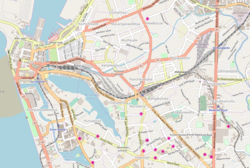The free-market economy of Sri Lanka was worth $84 billion by nominal gross domestic product (GDP) in 2019 and $296.959 billion by purchasing power parity (PPP). The country had experienced an annual growth of 6.4 percent from 2003 to 2012, well above its regional peers. This growth was driven by the growth of non-tradable sectors, which the World Bank warned to be both unsustainable and unequitable. Growth has slowed since then. In 2019 with an income per capita of 13,620 PPP Dollars or 3,852 (2019) nominal US dollars, Sri Lanka was re-classified as a lower middle income nation by the World Bank from a previous upper middle income status.
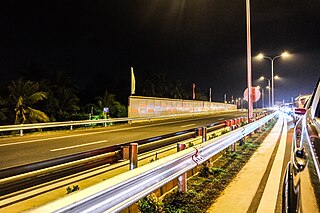
Transport in Sri Lanka is based on its road network, which is centred on the country's commercial capital Colombo. A rail network handles a portion of Sri Lanka's transport needs. There are navigable waterways, harbours and three international airports: in Katunayake, 35 kilometres (22 mi) north of Colombo, in Hambantota, and in Jaffna.
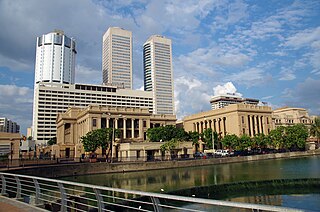
Colombo is the commercial capital and largest city of Sri Lanka by population. According to the Brookings Institution, Colombo metropolitan area has a population of 5.6 million, and 752,993 in the Municipality. It is the financial centre of the island and a tourist destination. It is located on the west coast of the island and adjacent to the Greater Colombo area which includes Sri Jayawardenepura Kotte, the legislative capital of Sri Lanka, and Dehiwala-Mount Lavinia. Colombo is often referred to as the capital since Sri Jayawardenepura Kotte is itself within the urban/suburban area of Colombo. It is also the administrative capital of the Western Province and the district capital of Colombo District. Colombo is a busy and vibrant city with a mixture of modern life, colonial buildings and monuments.
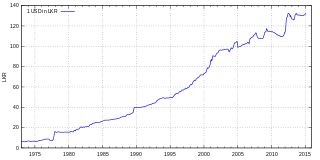
The Sri Lankan Rupee is the currency of Sri Lanka. It is subdivided into 100 cents, but cents are rarely seen in circulation due to its low value. It is issued by the Central Bank of Sri Lanka. The symbol ₨. is generally used, but the currency code "LKR" is occasionally used to distinguish it from other currencies also called rupee.

Bank of Ceylon is a state-owned, major commercial bank in Sri Lanka. Its head office is located in an iconic cylindrical building in Colombo.

The Central Bank of Sri Lanka (CBSL) is the monetary authority of Sri Lanka. It was established in 1950 under the Monetary Law Act No.58 of 1949 (MLA), it is a semi-autonomous body, and following the amendments to the MLA in December 2002, is governed by a five-member Monetary Board, comprising the Governor as chairman, the Secretary to the Ministry of Finance and Planning, and three members appointed by the President of Sri Lanka, on the recommendation of the Minister of Finance, with the concurrence of the Constitutional Council.
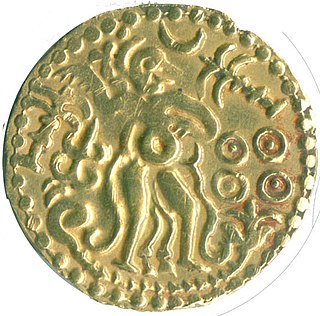
Kahavanu is a medieval currency from Sri Lanka.

Battaramulla is a suburb of Colombo, situated 8.4 km (5 mi) from the city centre at Colombo Fort, near the Parliament of Sri Lanka. It is one of the fastest developing administrative, commercial and residential areas in the Colombo District, being home to the country's elite. Battaramulla is an important town in Sri Lanka, because of the Sri Lankan government's decision to locate all the government department head offices in this town.

Galle Face is a 5 ha ocean-side urban park, which stretches for 500 m (1,600 ft) along the coast, in the heart of Colombo, the financial and business capital of Sri Lanka. The promenade was initially laid out in 1859 by Governor Sir Henry George Ward, although the original Galle Face Green extended over a much larger area than is seen today. The Galle Face Green was initially used for horse racing and as a golf course, but was also used for cricket, polo, football, tennis, and rugby.

The Colombo National Museum, also known as the Sri Lanka National Museum, is a museum in Colombo and the largest in Sri Lanka. Founded in 1877 and maintained by the Department of National Museums, it holds collections of significant importance to Sri Lanka, such as the regalia of the Kandyan monarchs, as well as many other exhibits relating the country's cultural and natural heritage.

The following outline is provided as an overview of and topical guide to Sri Lanka:

Cargills (Ceylon) PLC is a Sri Lankan Retail, FMCG, Banking and Restaurant company which is listed on the Colombo Stock Exchange. The controlling interest in the company is held by Ceylon Theatres PLC.

Fort (Colombo) is the central business district of Colombo in Sri Lanka. It is the financial district of Colombo and the location of the Colombo Stock Exchange (CSE) and the World Trade Centre of Colombo from which the CSE operates. It is also the location of the Bank of Ceylon headquarters. Along the foreshore of the Fort area is the Galle Face Green Promenade, built in 1859 under the governance of Sir Henry George Ward, the Governor of Ceylon during British colonial era. Fort is also home to the General Post Office, hotels, government departments and offices.

The Anuradhapura period was a period in the history of Sri Lanka of the Anuradhapura Kingdom from 377 BC to 1017 AD. The period begins when Pandukabhaya, King of Upatissa Nuwara moved the administration to Anuradhapura, becoming the kingdom's first monarch. Anuradhapura is heralded as an ancient cosmopolitan citadel with diverse populations.
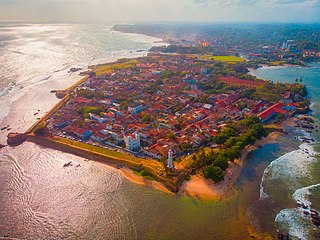
Galle Fort, in the Bay of Galle on the southwest coast of Sri Lanka, was built first in 1588 by the Portuguese, then extensively fortified by the Dutch during the 17th century from 1649 onwards. It is a historical, archaeological and architectural heritage monument, which even after more than 432 years maintains a polished appearance, due to extensive reconstruction work done by Archaeological Department of Sri Lanka.

Lotus Tower, also referred to as Colombo Lotus Tower, is a tower 350 m (1,150 ft) high, located in Colombo, Sri Lanka. It has been called a symbolic landmark of Sri Lanka. As of 2019, the tower is the tallest self-supported structure in South Asia; the second tallest structure in South Asia after the guy-wire-supported INS Kattabomman in India; the 11th tallest tower in Asia and the 19th tallest tower in the world. It was first proposed to be built in the suburb of Peliyagoda but later the Government of Sri Lanka decided to change the location. The lotus-shaped tower is used for communication, observation and other leisure facilities. Construction costed $104.3 million.
The banknotes of the Sri Lanka rupee are part of the physical form of Sri Lanka's currency. The issuance of the rupee banknotes began in 1895.
Manthai is a coastal town and an ancient harbor situated in the Mannar district, of the Northern Province of Sri Lanka. Manthai functioned as the main port of the Anuradhapura Kingdom throughout its history.

This is a bibliography of works on Sri Lanka.

